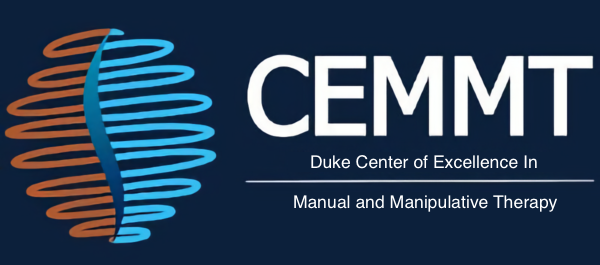Author Names
Maghroori Razie, Karshenas Leila, and Khosrawi Saied
Reviewer Name
Luke Vitale, SPT, CSCS
Reviewer Affiliations
Duke University School of Medicine, Doctor of Physical Therapy Division
Paper Abstract
Background: Iliotibial band syndrome (ITBS) is a common leading cause of lateral knee pain. Despite varieties of medical and non-medical treatments proposed for the management of ITBS, the best therapeutic approach for its treatment remained a significant question. The current study aims to compare the outcomes of dry needling (DN) versus shockwave therapy (SWT) in the management of ITBS. Materials and Methods: This randomized clinical trial was conducted on 40 patients diagnosed with ITBS. The patients were randomly divided into two treatment groups of DN (n=20) and SWT (n=20). Visual analog scale for the pain assessment, Lower Extremity Functional Scale (LEFS) for the function evaluation, and length of the iliotibial band were assessed at baseline, immediately after the cessation of the intervention, and within four weeks. Results: The two groups were similar regarding demographic characteristics (P0.05). Both approaches could efficiently lead to improved pain (P0.001) and promoted function based on LEFS (P0.001); however, iliotibial band length (ITBL) did not alter remarkably (P0.05). The groups were similar in terms of pain score, LEFS, and ITBL at all of the assessment intervals (P0.05), but the pain score within four weeks following the interventions that were significantly better in DN (P=0.023). Conclusion: Based on our results, DN, as well as SWT, could remarkably lead to an improvement in pain and function among patients resenting from ITBS; however, none of the approaches was superior over the other.
Keywords: Iliotibial Band Syndrome, Dry Needling, Extracorporeal Shockwave Therapy, Pain
NIH Risk of Bias Tool
Was the study question or objective clearly stated?
- Yes
Were eligibility/selection criteria for the study population prespecified and clearly described?
- Yes
Were the participants in the study representative of those who would be eligible for the test/service/intervention in the general or clinical population of interest?
- Yes
Were all eligible participants that met the prespecified entry criteria enrolled?
- Yes
Was the sample size sufficiently large to provide confidence in the findings?
- No
Was the test/service/intervention clearly described and delivered consistently across the study population?
- Yes
Were the outcome measures prespecified, clearly defined, valid, reliable, and assessed consistently across all study participants?
- Yes
Were the people assessing the outcomes blinded to the participants’ exposures/interventions?
- Yes
Was the loss to follow-up after baseline 20% or less? Were those lost to follow-up accounted for in the analysis?
- Cannot Determine, Not Reported, Not Applicable
Did the statistical methods examine changes in outcome measures from before to after the intervention? Were statistical tests done that provided p values for the pre-to-post changes?
- Yes
Were outcome measures of interest taken multiple times before the intervention and multiple times after the intervention (i.e., did they use an interrupted time-series design)?
- No
If the intervention was conducted at a group level (e.g., a whole hospital, a community, etc.) did the statistical analysis take into account the use of individual-level data to determine effects at the group level?
- Cannot Determine, Not Reported, Not Applicable
Key Finding #1
SWT and DN both significantly reduced pain from baseline compared to cessation of treatment and at 4-week follow-up.
Key Finding #2
SWT and DN both significantly improved LE function as measured by the LEFS at cessation and 4-week follow-up compared to baseline.
Please provide your summary of the paper
Iliotibial Band Syndrome (ITBS) is commonly blamed for lateral knee pain, however consensus on the best treatment for ITBS is not always so clear. This study investigated the effects of dry needling (DN) versus shockwave therapy (SWT) on pain, lower extremity function, and IT band length. The authors found that DN and SWT significantly reduced pain from baseline, to immediately following the last treatment session, and 4 weeks following treatment. However, this paper did not find that either DN or SWT were significantly more effective than one another, i.e., neither one is superior. While this study provides interesting findings regarding possible treatment and/or pain management options for ITBS, there are limitations to the study. Firstly, there was no control group identified so we cannot determine if SWT or DN is superior to standard care or placebo. Further, the sample size used in this study was relatively small (40 participants). Finally, follow-up was limited to only 4 weeks after cessation of treatment, so it is unclear if these reductions in pain and improvement in function would persist past the follow-up period. The authors suggest that more studies need to be conducted with a longer follow-up period in order to generalize results.
Please provide your clinical interpretation of this paper. Include how this study may impact clinical practice and how the results can be implemented.
The use of DN may be useful in the treatment of ITBS. It has shown an ability to significantly reduce pain from ITBS as well as improve LE function when measured using the LEFS. Whether or not DN is warranted in your treatment plan will ultimately depend on your patient’s preferences, irritability, and level of comfort with DN. A possible benefit of DN would be a better tolerance to increased training volume in the running, hiking, and cycling population due to reduced pain following treatment. This could potentially allow patients to perform closer to baseline in their rehab or return to baseline quicker. However, as the authors mentioned, further studies need to be performed in order to make generalized statements.
